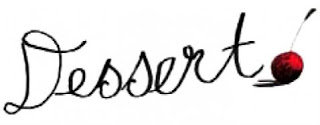We are moving to a new library management system fairly soon. Our old system was first introduced to NSW schools in 1988 so you can imagine it is a little outdated.
As a part of the migration process I have been looking at our book series.
Here are some of my favourite series to read to our Kindergarten and Year One students:
There are more than ten titles in this series and every book is a winner. Frog discovers his identity, he finds strength from true friendships and Frog demonstrates his compassion for others. There are twelve books in this series.
I like to read this series to our Year One classes.
Frog is a Hero is my favourite.
Winnie is a wonderful character who we also enjoy meeting with our Year One classes. The illustrations by Korky Paul are perfect. There are more than fifteen books in this series plus some chapter books and a joke book.
My favourite from this series is
Winnie Flies again.
Late in the year we often explore the theme of dogs with our Kindergarten classes. The Kipper books are always part of this unit. There are more than seven books in this series along with some tiny books called Little Kippers.
My favourite from this series is
The Blue Balloon which is the book where we first meet Kipper.
We always start our year with this book. It is a familiar text. It allows the children to participate in the story telling because there is a repeated refrain. I love using different voices and I keep a little hippo in my library bag.
There are five
books in this series and my favourite is the first book
There's a hippopotamus on our roof eating cake.
We read these
books to our Kindergarten classes and we talk about circle stories. I have a CD of these books and so the children enjoy dancing (
If you give a pig a pancake), and filling in the blank words (
If you give a mouse a cookie). One book from this series is perfect for Christmas (
If you take a mouse to the movies).
There are eight books in this series and also some small chapter books. I have made a
pinterest collection to support the topic of lighthouses. We are lucky to have a wonderful lighthouse near our school. This series is perfect for Year One and Year Two.
It is so interesting when we read this series aloud to see the children recognize their own reactions and behaviours reflected in the way Lily treats her precious kangaroo toy. I like to read this series to Year One. There are ten books in this series.
My favourite from this series is
It was you Blue Kangaroo.
This term we are reading the
Tacky series with our Year One classes. These books are always winners. Tacky is such a special character and in spite of his odd behavior he always saves the day. There are more than eight books in the series.
My favourite from this series is
Three Cheers for Tacky.
Elmer is a little like Frog from the book
Frog is Frog. He is wise and kind to his friends. We love to read the Elmer books with our Kindergarten classes. There are twenty-seven books in the series and we own nearly all of them.
My favourite from this series is
Elmer on Stilts.
This post about series came about because I was browsing the holdings of some other libraries in my area and one author I searched for in each school database was
Frank Asch. He is one of my most favourite writers. Oddly nearly every school had no books from the
Moonbear series. There are twelve books in this series and we always start with
Happy Birthday Moon. There is a terrific little Weston Woods film that you can watch with the children this after reading this book.
My favourite from the series is
Mooncake.































